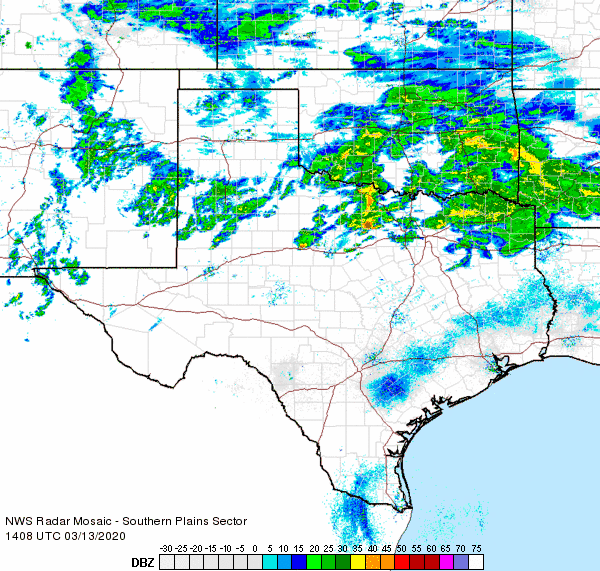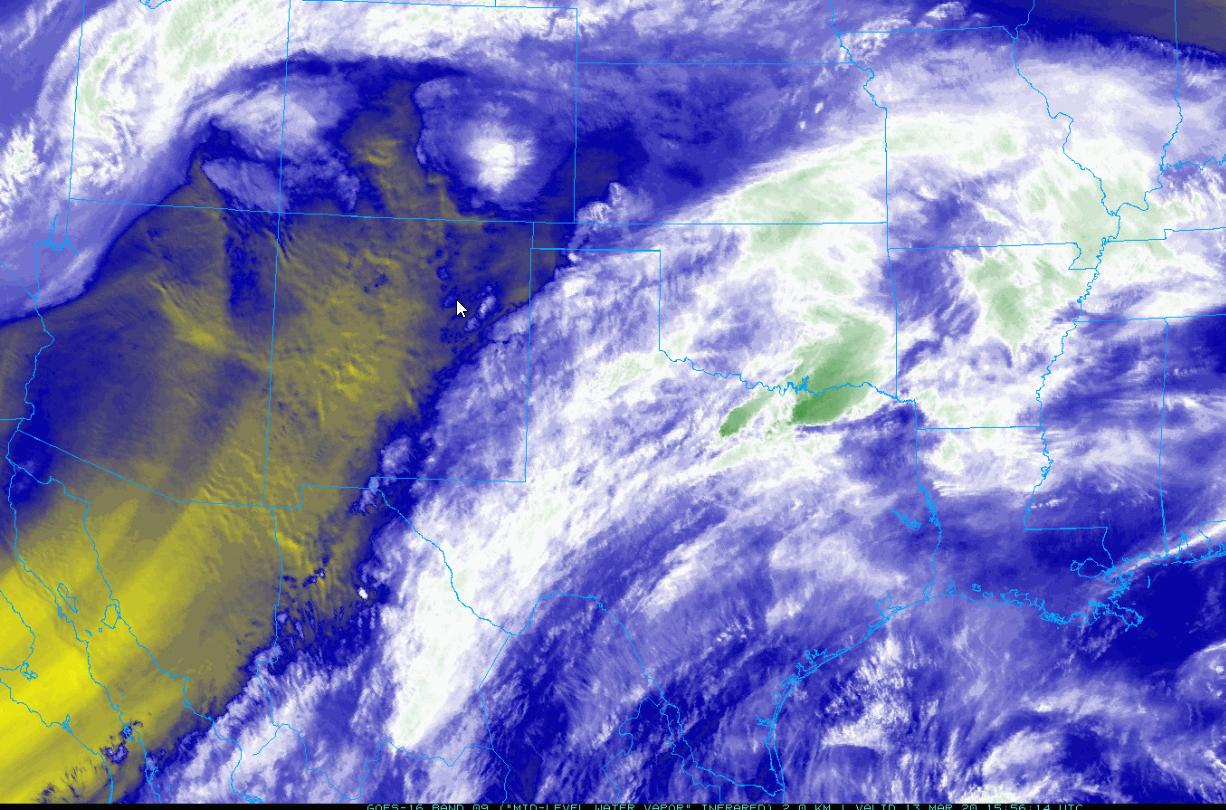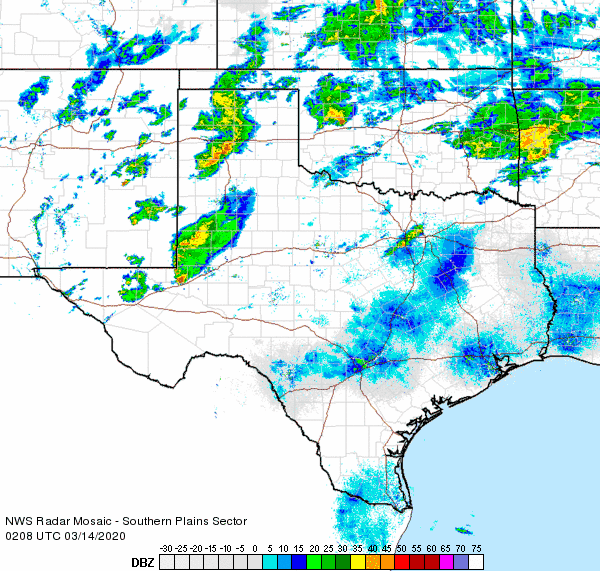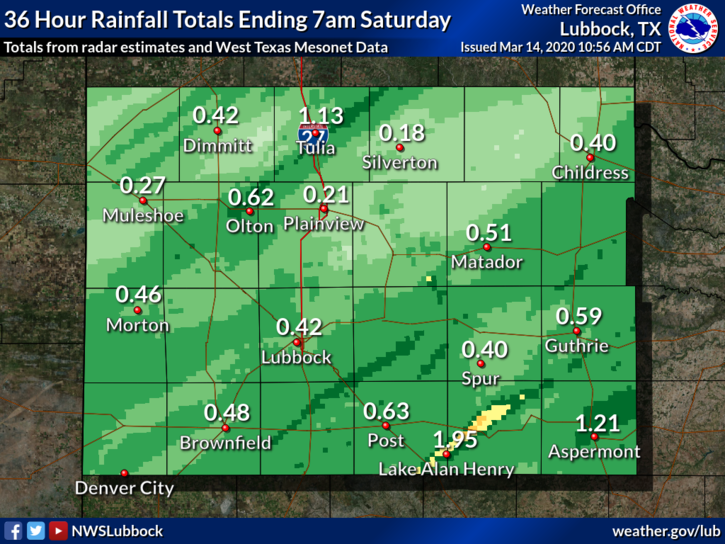| More Rain for West Texas 12-14 March 2020 |
|
 |
|
| Regional radar animation valid from 9:08 am to 10:18 am on 13 March 2020. An additional radar animation, valid from 5:48 pm to 6:58 pm on 12 March 2020, can be FOUND HERE. | |
|
The active early spring weather continued into mid-March, thanks to another cold front and plenty of middle and upper level moisture streaming off of the eastern Pacific. Light rain initially developed across the southwest South Plains Thursday evening (12 March) as a cold front sagged southwestward through the region. |
|
 |
|
| Water vapor image captured at 10:56 am on 13 March 2020. | |
|
The rain coverage peaked early Friday morning (13 March), when the entire region saw at least a little light rain. Many spots across the South Plains and Rolling Plains picked up a quick quarter to half inch plus from this early day activity. |
|
 |
|
| Regional radar animation valid from 9:08 pm to 10:18 pm on 13 March 2020. An additional radar animation, valid from 5:48 pm to 6:58 pm on 13 March 2020, can be FOUND HERE. | |
|
Foggy and drizzly conditions followed Friday afternoon, with additional rounds of scattered showers and thunderstorms Friday evening/night. The precipitation eventually shifted east of the region by Saturday morning. |
|
 |
|
| 36-hour rainfall (inches) ending at 10 am on 13 March 2020. | |
|
Rain totals from Thursday evening to early Saturday morning were generally in the quarter to half inch range, though there were narrow swaths near and above an inch. The West Texas Mesonet near Lake Alan Henry was the big winner, recording an impressive 1.95 inches of rain. Officially, Lubbock measured 0.38 inches or rain and Childress recorded 0.41 inches. The rain at Lubbock boosted the yearly running total to 2.32 inches, which is 0.46 inches above normal. |
|